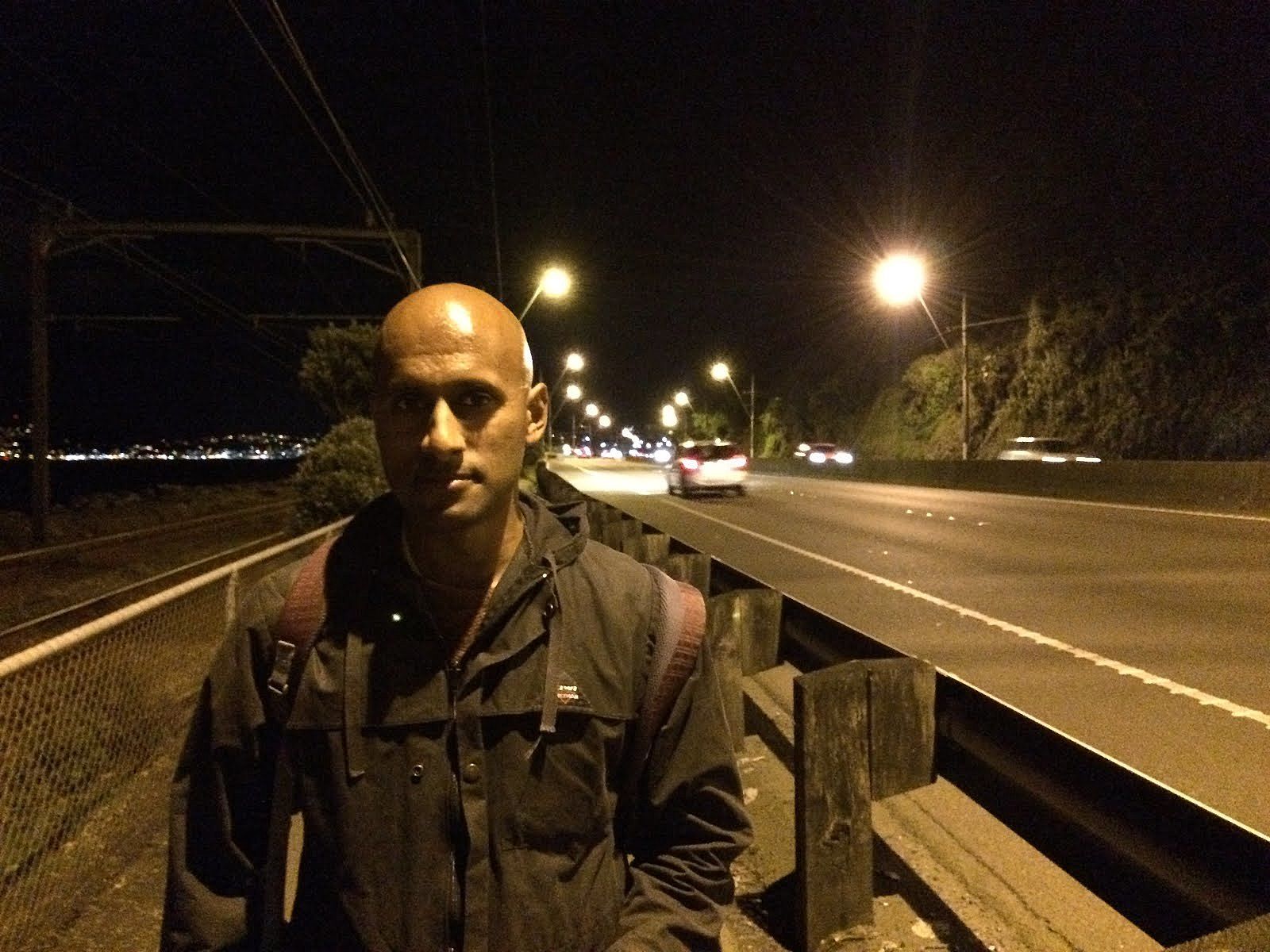Kindness of Strangers: A review of Sodden Downstream
Therese Lloyd reviews Brannavan Gnanalingam's latest novel, Sodden Downstream.
Brannavan Gnanalingam's novel A Briefcase, Two Pies and a Penthouse was longlisted for the 2017 Ockham Book Awards. Therese Lloyd reviews his latest, Sodden Downstream.
Sodden Downstream, Brannavan Gnanalingam’s fifth novel, chronicles one day in the life of Sita, a Tamil refugee from Sri Lanka, recently settled with her son and husband in the suburb of Naenae, Lower Hutt.
It’s 12.14pm when the novel begins, and 8.13am the following morning when it concludes. The 16 hours between are nothing short of harrowing as we follow Sita’s epic journey to get from her home in the Hutt to her cleaning job in Wellington or else have her contract terminated. Sita is faced with innumerable obstacles, the chief impediment being something no one can control, namely Wellington’s notoriously awful weather. A ;once in a hundred-years’ storm has shut down both major motorways in and out of the city, canceling all public transport, and leaving Sita a lone crusader, desperately trying to find alternative ways to get to work.
The cleverness of Gnanalingam’s novel lies in his subversion of the classic quest narrative.
The cleverness of Gnanalingam’s novel lies in his subversion of the classic quest narrative. Unlike Odysseus trying to make his way home to a loving wife and restoration to his throne, Sita’s destination is an anonymous office building, somewhere in the CBD. It is fear and necessity as opposed to desire that spurs her on. The fact that Gnanalingam makes his hero’s destination a set of rooms, which she must clean upon arrival, is cruelly disarming.
But most readers don’t tend to read novels for their themes. Themes are satisfying to identify, but they need to be subtle; the invisible mechanics that operate the unfolding of a good yarn. Sita’s quest is hardly subtle, but it is powerfully told.
More obvious, as a running motif, is ‘the kindness of strangers.’ In order to get to her destination, Sita must rely on help offered by a host of strangers she meets along the way. While many of these encounters actually stall Sita’s mission, at least she seems to bring out the best in people. If you’ve traveled abroad, you may have been lucky enough to have experienced such moments – welcome and unexpected generosity from people who typically have little to give. The novel places great stock in such incidents, shining a light on the fragility of life without human compassion.
As a philosophical tenet for a novel, the kindness of strangers is an admirable and workable one. However, it’s possible to have too much of a good thing. The novel is literally saturated in characters down on their luck who are, nonetheless, happy to go out of their way for Sita. So much so, that at certain points it reads as far-fetched. There’s Gavin, the ex-con on his first day out of the Big House; Regan, a prostitute trying to get to work; Sanna, the frustrated trans-gender character who’s gender reorientation surgery has been postponed; James a misunderstood teenage delinquent; Frack who lives in his car, and a host of rough sleepers.
As a philosophical tenet for a novel, the kindness of strangers is an admirable and workable one.
The novel’s tendency to highlight the ‘nobility of the poor,’ means Gnanalingam’s characters appear like a role call for the disenfranchised amongst us, and, as such, their power to shape and enlarge the narrative is somewhat watered down.
Perhaps this would be less problematic if the middle-class-suit-wearing-SUV-driving characters weren’t all so horrible. In other words, bosses and rich people are bad, poor people are good. My sense is that this is not exactly what the author intends. There’s real passion and fire in some of the writing: a genuine attempt to give voice to those who are living on the margins of society. However, a more nuanced rendering rather than a reductive goodies versus baddies scenario would have strengthened the novel.
In many ways, Sita is a complicated figure, oscillating between pitiable, brave, pig-headed, and a martyr. She is constantly thwarted not just by weather and a lack of reliable transport, but by a host of intangibles such as misreading the everyday social mores that have kept kiwis passive-aggressively interacting for a couple of hundred years. And it’s these moments that delve into the complexities of communication where Gnanalingam’s writing is at its strongest. Gnanalingam is masterful in his ability to portray a sense of ‘otherness’ and he does this particularly well through dialogue; his rendition of Kiwi idiom is some of the best you’ll read, and when you consider that Sita’s English is not great, it’s almost excruciating to read passages like the following and to know that that is more or less exactly how we speak:
“It’s nothing eh. It’s a shitter out there, and if the buses aren’t running, you folk aren’t going anywhere. Now whereabouts in Petone are you?”
“Oh mate, anywhere on Jackson Street would be fine. Are you sure you’re able to do this? It’s a mad storm out there. Where do you live?”
“I’m in Epuni eh, but nah mate, I couldn’t leave you folk out there. Not today. Where in Jackson Street? The fancy pants end?”
“Nah.”
“Sweet, the real end. Too right. We’ll go that end.”
“Oh shot bro you’re a fucking legend.”
While at times Gnanalingam overplays this card, (the scene where Sita’s boss Mr Poleman repeats the phrase ‘the odium’ being a case in point), his close attention to the peculiarities of New Zealanders’ phrasing is bang on.
As a concept, the double life of a refugee is rich in possibility; necessity versus choice, starting again versus being trapped by the past. As a lived experience, however, the life of a refugee is traumatic and baffling. Sita must reconcile her most recent memories of her home country filled with terror, violence and corruption, with her current reality – that of a bleak hand to mouth existence in suburban working class New Zealand.
Gnanalingam is determined his reader feels the almost insurmountable difficulties of Sita’s current situation. A lot of anger is directed towards the various individuals and government agencies that are supposed to be making her life easier upon arrival in New Zealand, but are actually making it harder. However, it’s Sita’s internal conflicts that underscore the moments of real poignancy in the novel.
The novel is ultimately held together by the author’s fierce sense of justice and a deep desire to expose the inequalities rife in New Zealand society.
As Sita begins her journey, we are reminded that this is something that most New Zealanders wouldn’t do, even if the consequences were as dire as threatening a very tenuous grip on the financial security of your family. The absurdity of walking from the Hutt to Wellington city in a torrential storm with nothing but a thin jacket on her back makes no sense, unless your life depends on it, and this, of course, is the point. Sita’s heroic act of walking 20kms to get to work pales in comparison to the courage, determination and tenacity it took her to flee her war-torn home.
There’s a break away chapter towards the end of the book where Sita recalls memories of the civil war in Sri Lanka. There’s real heat in this chapter, derived in part by Gnanalingam’s abandonment of all punctuation, save for the last sentence. While not particularly elegant as a rhetorical technique, it does propel the narrative forwards, acting as useful device to get Sita to her final destination; a clever move on the author’s part because there’s only so much rainwater a reader can handle. It’s also the first time that we are given a fuller and clearer picture from Sita’s perspective of some of the horrors and atrocities that occurred during the Sri Lankan civil war.
The novel is ultimately held together by the author’s fierce sense of justice and a deep desire to expose the inequalities rife in New Zealand society. While somewhat undermining this by repeating the same scenario with similar characters, the author does give voice to a mostly unheard minority. As he states in the acknowledgments, his novel is a ‘small contribution towards Doubling the Quota.’
Sodden Downstream is available from Lawrence and Gibson.


